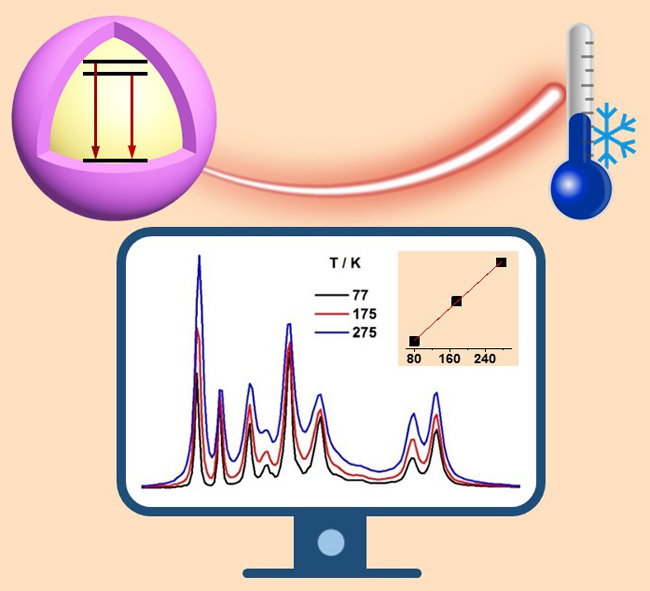Trivalent neodymium (Nd3+) ion doped near-infrared (NIR) luminescent nanocrystals (NCs) have recently attracted considerable attention owing to their superior features as excellent NIR-to-NIR luminescent nanoprobes for deep-tissue bioimaging and temperature sensing.
However, it remains notoriously difficult to unravel the electronic structures of Nd3+ in NCs and assign its CF transition lines in the NIR of interest because of the line broadening and multiple sites of Nd3+ in NCs.
In a recent study published in Adv. Sci., the research group led by Prof. CHEN Xueyuan from Fujian Institute of Research on the Structure of Matter (FJIRSM) of the Chinese Academy of Sciences (CAS) reported for the first time the electronic structures of Nd3+ in LiLuF4 NCs.
Researchers used Eu3+ ion as the structural probe to unveil the local site symmetry of Ln3+ dopants in LiLuF4 NCs by means of high-resolution photoluminescence (PL) spectroscopy, time-resolved PL (TRPL) spectroscopy, and site-selective PL spectroscopy at 10 K.
A single spectroscopic site of S4 symmetry for Ln3+ dopants was identified in LiLuF4 NCs, which is consistent with the crystallographic site symmetry of Lu3+ in LiLuF4 lattice.
By virtue of temperature-dependent PL spectroscopy, researchers found that a total number of 36 CF transition lines of Nd3+ in LiLuF4 NCs in the NIR region were unequivocally assigned.
Furthermore, by taking advantage of the well-resolved CF transition lines from the thermally coupled Stark sublevels of 4F3/2 of Nd3+, researchers showed the application of LiLuF4:Nd3+ NCs as NIR-to-NIR luminescent nanoprobes for ratiometric detection of cryogenic temperature with a wide linear range of 77–275 K and the highest relative temperature sensitivity (Sr) of 0.62% K-1, which is comparable to the best Sr value for Nd3+-activated luminescent nanothermometers previously reported.
The unambiguous revelation of photoactive site symmetry and electronic structures of Nd3+ in inorganic NCs is of vital importance for future design and development of Nd3+-based NIR luminescent nanoprobes toward versatile applications such as cryogenic temperature sensing for space and energy exploration.

Schematic representation of the ratiometric detection of cryogenic temperature based on LiLuF4:Nd3+ nanoprobes. (Image by Prof. CHEN’s Group)
Contact:
Prof. CHEN Xueyuan
Fujian Institute of Research on the Structure of Matter
Chinese Academy of Sciences
Email: xchen@fjirsm.ac.cn